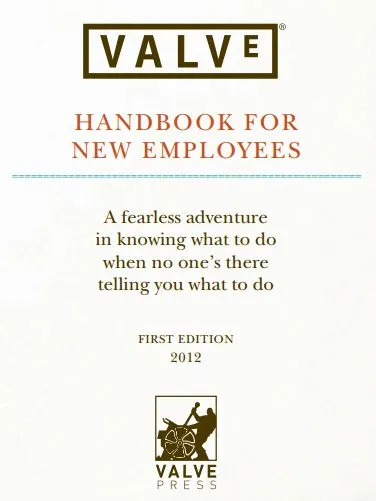Employee handbooks are a great way for a company to communicate to new and existing employees of their rights and responsibilities. But what exactly are they?
An employee handbook is a document which provides guidance and information related to a company’s mission, vision, values, policies and procedures. They are usually provided to new hires so that they know everything they need to know to get started at their job. These employees will feel more comfortable in their day-to-day activities and work as efficiently as possible right off the bat.
Additionally, all employees will have a better sense of the company’s culture through the employee handbook. It is imperative that companies develop an effective employee handbook to ensure a positive work environment.
This blog will explore how to write an employee handbook, what to include in it, and some examples from some of the largest companies in the world.
One important thing to note is that employee handbooks are not a form of an employee agreement.
How to Write an Employee Handbook
Here are some tips to keep in mind when writing your employee handbook:
- Structure your sections. Before even writing your handbook, you should plan what sections you will include and in what order they will be in. Consider using the sections that we will discuss later in this blog or have a look online for some templates.
- Make it easy to read and understand. This means using shorter sentences, simpler language, and avoiding using jargon.
- Avoid large blocks of text. Consider including pictures and illustrations to explain concepts. You should also be using plenty of headings, sub-headings, bullet points, and paragraph breaks. This will increase the readability of the document.
- Give it to employees for feedback. Once you have completed the first draft of the handbook, it’s a good idea to hand it over to a group of employees for feedback. They are in the best position to tell you if it is readable and whether improvements need to be made.
- Set a date to review it. Your job isn’t done when you finish writing the handbook. Things change all the time both in your internal and external environment. It is important that you set a date to review the handbook and make the alterations necessary to reflect these changes.
What to Include
There are a lot of bases to cover when it comes to employee handbooks. Since all companies are different, some sections that we discuss will be more relevant to your company than others. This is also not an exhaustive list. You should think about what information your employees need to know to be effective workers in your organisation.
Company Profile
You should give an overview of the company in this section. Some points to discuss include your:
- Mission: What your company does, who it serves, and why it exists.
- Vision: What are the long-term plans for your company?
- Values: What are the beliefs that guide your actions.
- Culture: What is your company’s structure, leadership style, goals etc.
Employment Basics
This section will give new employees a good idea of what the terms of their contract and job classification are.
- Employment contract types: Define all your employment contract types, such as part-time, full-time, casual, intern and apprentices.
- Equal opportunity employment: This will promote your workplace as one free of discrimination and harassment
- Recruitment and selection process: It is typical to include your hiring process, including pre-employment checks and referral programs
- Attendance: Outline the procedures regarding what employees should do if they cannot make it to work
Workplace Policies
In this section, you should communicate what your workplace should be like and the policies that govern employees in that environment. The policies should cover areas such as:
- Confidentiality
- Data protection
- Anti-discrimination and anti-harassment
- Workplace health and safety
- Dress code

Code of Conduct
This section covers how employees are expected to treat other stakeholders of the business. Specific points that should be addressed here include:
- Cyber security
- Conflict of interest
- Employee relationships and fraternisation
- Employment of relatives
- Workplace visitors
- Solicitors and distribution
Compensation and Development
Employees should be made aware of how they are paid to show that your company values its employees and to act as motivation.
You should include information like the pay-grade structure, when employees should expect to be paid, and overtime rules. In terms of performance management, you should explain the objectives of performance reviews, how they will be performed, and how you would expect managers to lead a team. Finally, you should highlight any opportunities for further training and development within the company.

Employee Resignation and Termination
Employees should also have an idea of how an employment relationship may come to an end. This section should discuss topics such as:
- Steps of progressive discipline
- Notice period
- Resignation process
- Laws regarding termination
- Policies regarding references
Examples of Employee Handbooks
Below are examples of companies that have taken the time and effort to construct employee handbooks that are both engaging to read and contain all the information required for a new or even existing employee.
Valve
Valve is an American video game developer, publisher, and digital distribution company. Ever since being leaked in 2012, Valve’s employee handbook has received high praise online for its use of funny illustrations and off-beat sense of humour. Check it out here.

Zappos
Zappos is an American online shoe and clothing retailer which develops a new employee handbook annually. In one edition, the handbook was written in a comic-book style.

Netflix
As one of the largest streaming services in the world with its own production company, Netflix’s employee handbook embodies the phrase “simple yet effective.” Netflix goes straight to the point with a 129-slide slideshow full of short and simple sentences.

Conclusion
Employees are the most important asset to a business. Ensuring that they are properly informed on the culture and policies of a company is essential in creating an effective workplace. As such, managers need to know how to write an employee handbook and what sections to include in it. Companies like Valve, Zappos and Netflix prove that these handbooks can be both informative and engaging to the reader.
How useful was this post?
Click on a star to rate it!
Average rating 0 / 5. Vote count: 0
No votes so far! Be the first to rate this post.
Let's Get Started
Interested in learning more about how Polonious can help?
Get a free consultation or demo with one of our experts




